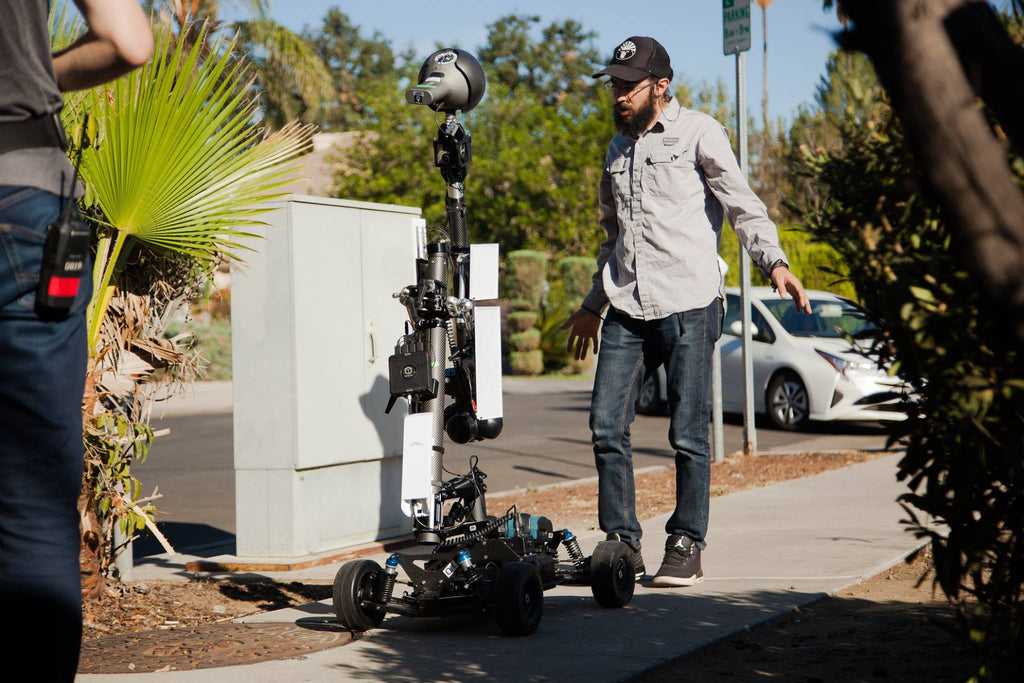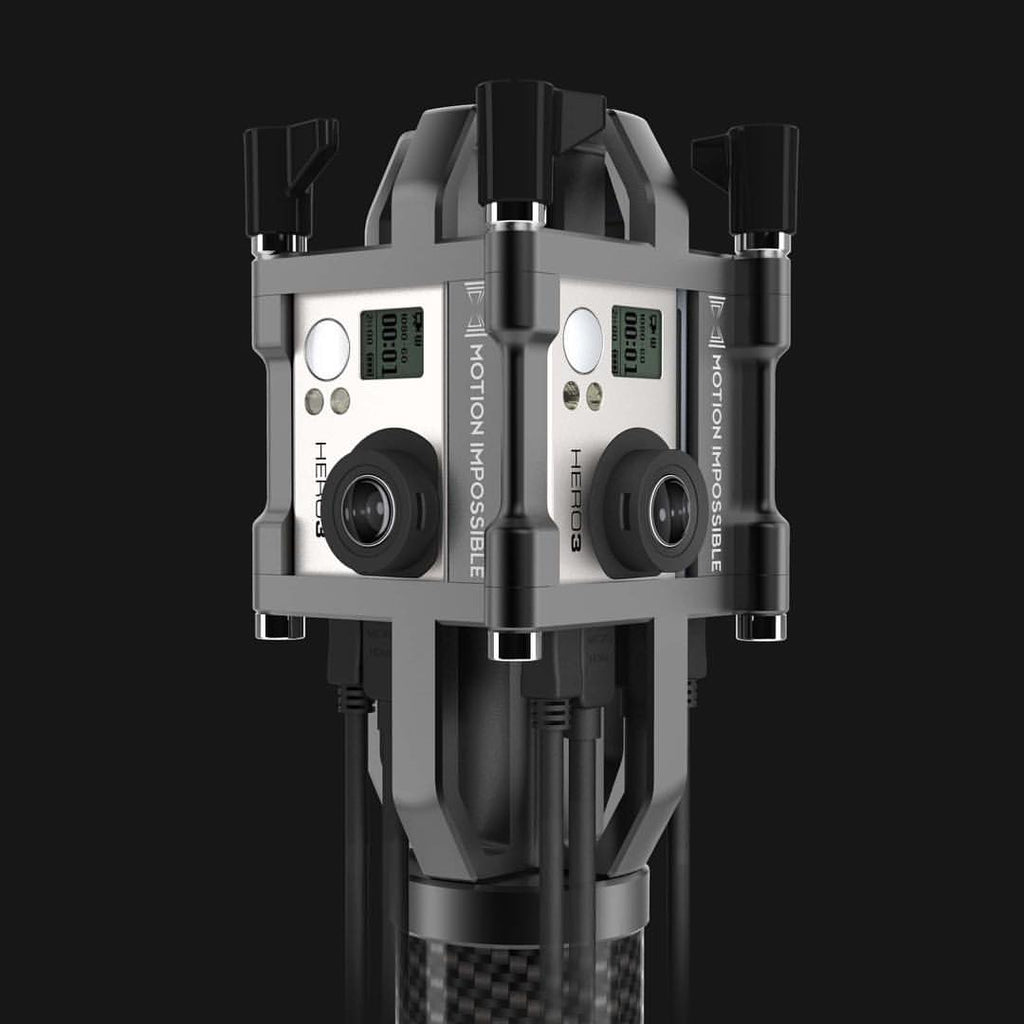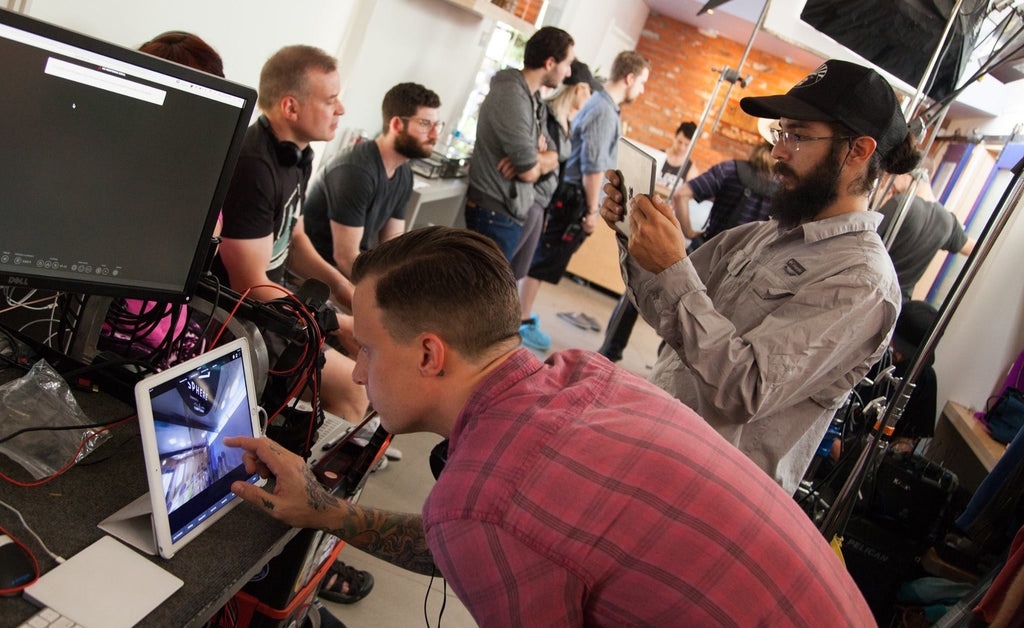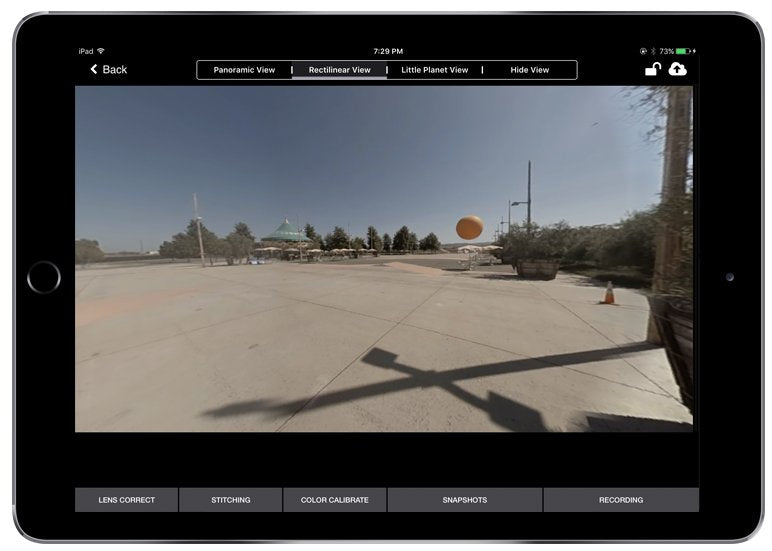
The Nokia OZO is widely recognized as one of the most popular cameras for filming 360º VR content, and one of the few available on the market that does it well. However, one of its biggest drawbacks is that there is no simple way to monitor the shot if the Ozo is mobile, forcing production crews to either record blindly or paint out wires in post. And when you’ve got clients and producers breathing down your neck, monitoring is an asset you’ll want to have at your disposal. Luckily there’s a very simple solution to this problem: the Teradek Sphere.
Teradek’s Sphere is a 360º live-monitoring and streaming device that allows anyone with an iPad or iPhone to view 360º footage in real-time. The free iOS app acts as a command and control interface for the Sphere hardware, giving crew on set the ability to fine tune lens and color correction, as well as stitching parameters across each camera on the rig. Since the entire system can operate over WiFi, the entire crew can be completely mobile and out of frame.

On a recent shoot for EndlessVR, Director Jeff Nicholas made good use of a Sphere and Ozo combo. The narrative required the Ozo to move seamlessly throughout the set, which prevented his crew from running cables back to Video Village. In order to keep cables out of the equation and monitor in real-time, Nicholas rigged the Sphere to a roving Mantis dolly and monitored each take wirelessly on an iPad.
The Mantis 360 is a rover designed by Motion Impossible to stabilize movement and keep 360 cameras level. It’s also able to be controlled remotely which allows for difficult-to-obtain shots. A great tool to help 360 videos come to life.
While the Ozo comes equipped with its own tethered monitoring system, the issue is that it requires a direct cable link between camera and PC, and having cables being caught in the shot was an obvious no-go. So just connect the Ozo directly to the Sphere, right? Well, the Ozo has an SDI out that can only feed into Blackmagic hardware and not much else, so direct connection with Sphere is impossible.

To circumvent this, the crew installed 4 GoPros in Motion Impossible’s “Sphere Cage” directly beneath the Ozo. The Sphere Cage is a piece of hardware designed to hold four GoPro Hero 4s. They are configured to be able to see a complete 360 view and have easy ⅜ 16” mounting points at the top and bottom to fall in line with any 360 camera such as the Ozo and Jaunt.

Since these cameras linked with the Sphere, they were able to simulate what the Ozo was capturing, essentially allowing the crew to monitor and control what they were filming without having to use any cables.

But that’s not the only way the Sphere was able to help. The Sphere’s stitching interface is extremely simple to use and allowed the team to adjust color contrast, lens flare, and weave the separate camera shots to adequately mimic the Ozo’s shots. The app also comes preloaded with three different viewing modes (rectilinear, panoramic, little planet), so each member of the team could monitor in the way that best suited their role on set. Rectilinear provides a normal view of the shots, panoramic gives a flat rectangular view, and little planet shows the entirety of the shot in a circle.
The monitoring can be viewed by multiple iOS devices that are under the same network, and can feed to a larger monitor screen as well.
And since the device is both compact and portable, it made for the perfect tool to attach to the Mantis 360 stabilizing dolly.

Director Nicholas was able to get some incredible shots with the custom rig, and the Sphere was integral to the filming process. The convenience of its wireless capabilities make it especially useful to the maneuverability and functionality he needed for this project. Coupled with the the Mantis rover, Sphere Cage and the iOS app, the Sphere should be an essential component of every 360º VR production.
Good info Shawn. Yes, you are right; you can monitor the Ozo feed directly hardlined to a PC and you will have to paint out the cable. However, this crew wasn’t ready to invest in painting out moving frames and being tethered down. So while the Ozo doesn’t directly connect into Sphere because it is sending out a proprietary signal, having the reference cameras and Sphere allow for a high res monitoring solution. That being said, a lot of times, many of the built-in wireless monitoring functions, such as the Ozo’s, are secondary to the camera’s main function as CPU is being utilized to drive the recordings. This is why companies have been using this kind of reference workflow to offload the task to maintain efficiency.
Marcel, it really depends on Nokia opening up compatibility.
OZO can currently be monitored rather effectively, either tethered or with wi-fi. The tethered method has a cable you need to hide or paint out, but at the PC you can also use an HMD to get an inside the headset feel, and there is also wi-fi monitoring which has some latency so it makes it useful in only specific cases. Also, I don’t think you can feed the OZO directly into the Sphere because OZO isn’t kicking out human readable files, they are .ozoraw and need to be ‘read’ in the Creator software.
Thank god I read thru the entire article! “Very simple” solution to me is an adapter to feed the into the Sphere, but perhaps Nikita’s just not ready for that kind of intimacy. This is no less than a coupled two-system solution. A work around for client benefit. So, no projection on how long it may take to be able to effectively monitor Ozo directly?